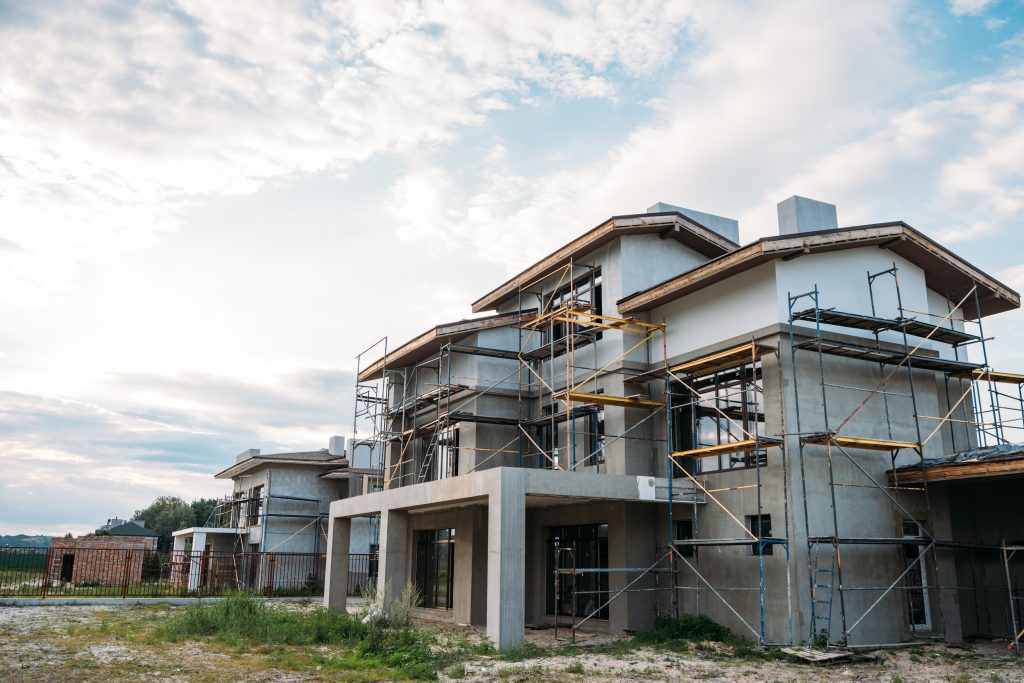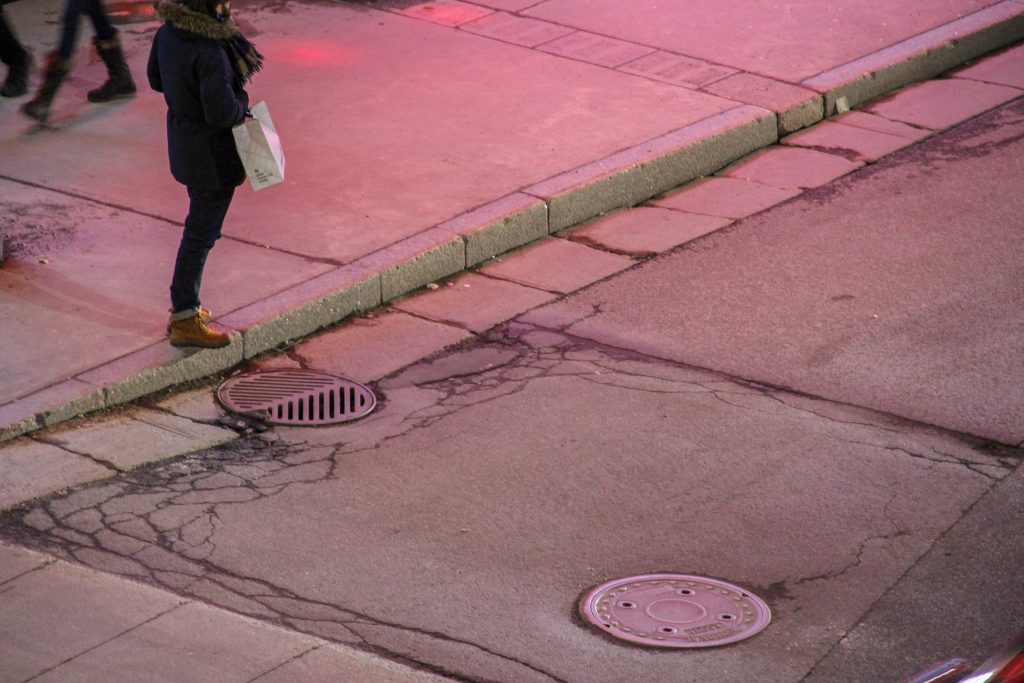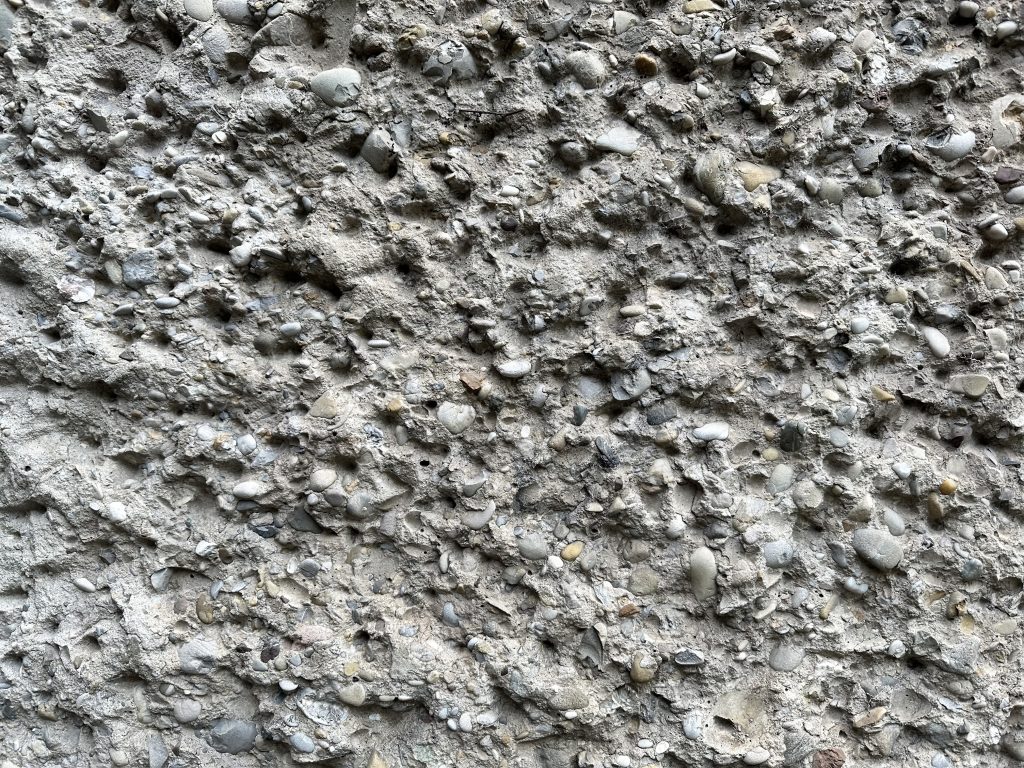Concrete fountains are a timeless addition to any backyard, blending the soothing presence of water with the enduring beauty of sculpted stone. Over time, however, these water features can suffer from wear and tear due to weather exposure and constant water flow. Cracks, leaks, and broken stone might mar the appearance and function of a concrete fountain, necessitating timely and effective repair to preserve its aesthetic appeal and structural integrity.

Regular maintenance is crucial to extend the life of a concrete fountain and ensure it remains a focal point of outdoor décor. Understanding the common problems that can affect concrete fountains is the first step toward effective maintenance. These issues can range from simple surface cracks that are mostly cosmetic to more significant structural damage that can compromise the fountain’s durability.
When it comes to repair, a correct approach can make all the difference. Employing appropriate materials such as epoxy, cement, and sealants can restore a fountain’s splendor and functionality. This process involves not only fixing the visible damage but also taking preventative measures to shield the fountain from future harm, ensuring that it continues to enhance the beauty of any outdoor space for years to come.
Assessing Fountain Damage

When a concrete fountain begins to show signs of wear and tear, a thorough assessment is crucial to determine the appropriate repair measures. Evaluation should pinpoint specific structural concerns such as cracks and leaking, which are common indicators of damage.
Identifying Common Issues
- Cracks: These are one of the most frequent problems in concrete fountains. Hairline cracks often appear due to weathering or settling, while larger fractures can signal more serious issues.
- Holes: Small holes may develop over time, typically caused by erosion or the dislodging of small concrete particles.
- Leaking: Evidence of water leakage needs immediate attention to prevent further degradation. It can occur around the joints or through minute cracks and holes.
- Concrete Sealer: Checking the existing sealer’s condition is essential. Deterioration here could be a precursor to more extensive damage due to water infiltration.
Evaluating Structural Integrity
- Inspect the fountain’s foundation and main structure for stability. Significant cracks or movements in the structure may necessitate a comprehensive repair strategy.
- Survey the joints between different sections of the fountain, as these areas are susceptible to movement and subsequent damage.
- Use of a concrete sealer is recommended after repairs to provide a protective barrier against future water penetration, ultimately extending the lifespan of the fountain.
By meticulously examining these aspects, one can ensure the correct identification and subsequent treatment of any impairments to the fountain’s integrity.
Preparation for Repair

Before one can begin the process of repairing a concrete fountain, it is crucial to properly prepare the surface. This involves thorough cleaning and meticulous surface preparation to ensure that subsequent repairs adhere correctly and stand the test of time.
Cleaning the Concrete Fountain
Cleaning the fountain is the foundational step in the repair process. One should turn off the fountain and drain all water from the basin. Rubber gloves should be worn to protect one’s hands during this process. A solution of 2 cups of vinegar diluted in a gallon of water can be an effective cleaning agent to help remove algae, mineral deposits, and other debris. Using a wire brush, scrub the concrete surfaces thoroughly yet gently to avoid causing any additional damage.
- Materials Needed for Cleaning:
- Protective rubber gloves
- Vinegar and water solution
- Wire brush
- Clean, absorbent cloth
After scrubbing, rinse the fountain with clean water and use an absorbent cloth to dry the surface completely.
Surface Preparation
Once the fountain is clean, the next step is surface preparation. This phase is critical for repairing cracks and chips in the concrete. One must remove any loose and crumbling material from the damaged areas. This can be achieved using a wire brush or a chisel to ensure a solid basis for the repair material to bond to.
- Steps for Surface Prep:
- Remove loose particles with a wire brush or chisel
- Smooth the area with sandpaper if necessary
- Ensure the surface is dry before proceeding with repairs
A clean and prepared surface is essential for the subsequent application of repair materials, such as concrete epoxy or cement, to create a seamless and durable repair.
Concrete Fountain Repair Techniques
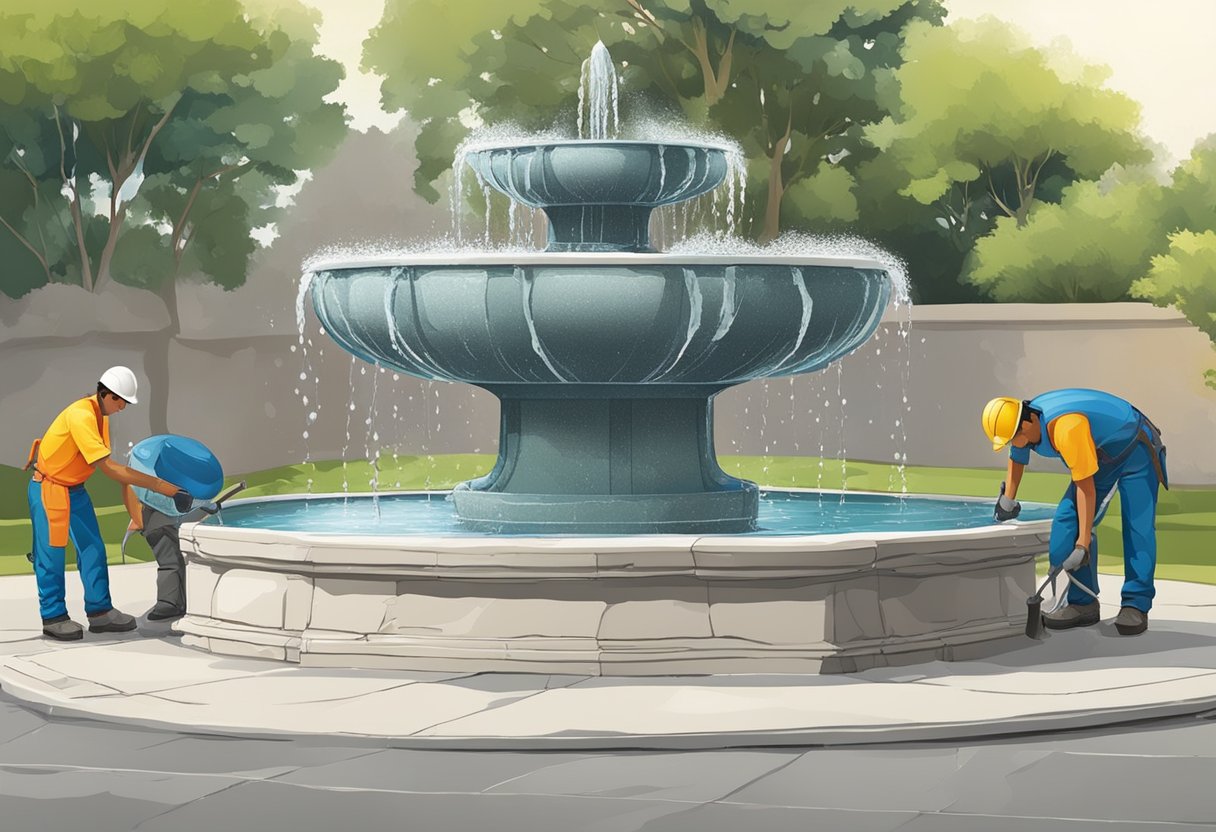
Concrete fountain repair typically involves addressing structural damage such as cracks and holes that could lead to leaks or further deterioration. Using the correct materials and techniques is vital for restoring the fountain’s functionality and aesthetics.
Repairing Cracks and Holes
- Materials Needed: Concrete epoxy, cement repair adhesive, sandpaper, putty knife.
- Steps:
- Identify all cracks and holes in the fountain.
- Clean the damaged area with a brush to remove dirt and debris.
- Sand down the area for better adhesive bonding.
- Apply the cement repair adhesive or concrete epoxy meticulously onto the crack or into the hole.
- Smooth the material with a putty knife and allow it to cure according to the product’s instructions.
For detailed guidance on repairing concrete fountains, watching instructional videos can provide clear visual cues and tips. A resource for this is a YouTube video on concrete fountain repair.
Patching and Sealing
- Materials Needed: Concrete patching compound, clear sealant, paintbrush or roller.
- Steps:
- Apply the concrete patching compound over the repaired cracks and holes.
- Ensure that the application is even and blends with the surrounding surface.
- Once it dries, seal the entire fountain with a clear sealant to protect against water and weather damage.
- Use a paintbrush or roller for an even coat of sealant.
The correct application of sealant can extend the life of the fountain by preventing water seepage and protecting the surface from environmental wear. For a practical illustration of sealing techniques, viewing this video on concrete fountain repair techniques can be useful.
Waterproofing and Finishing Touches
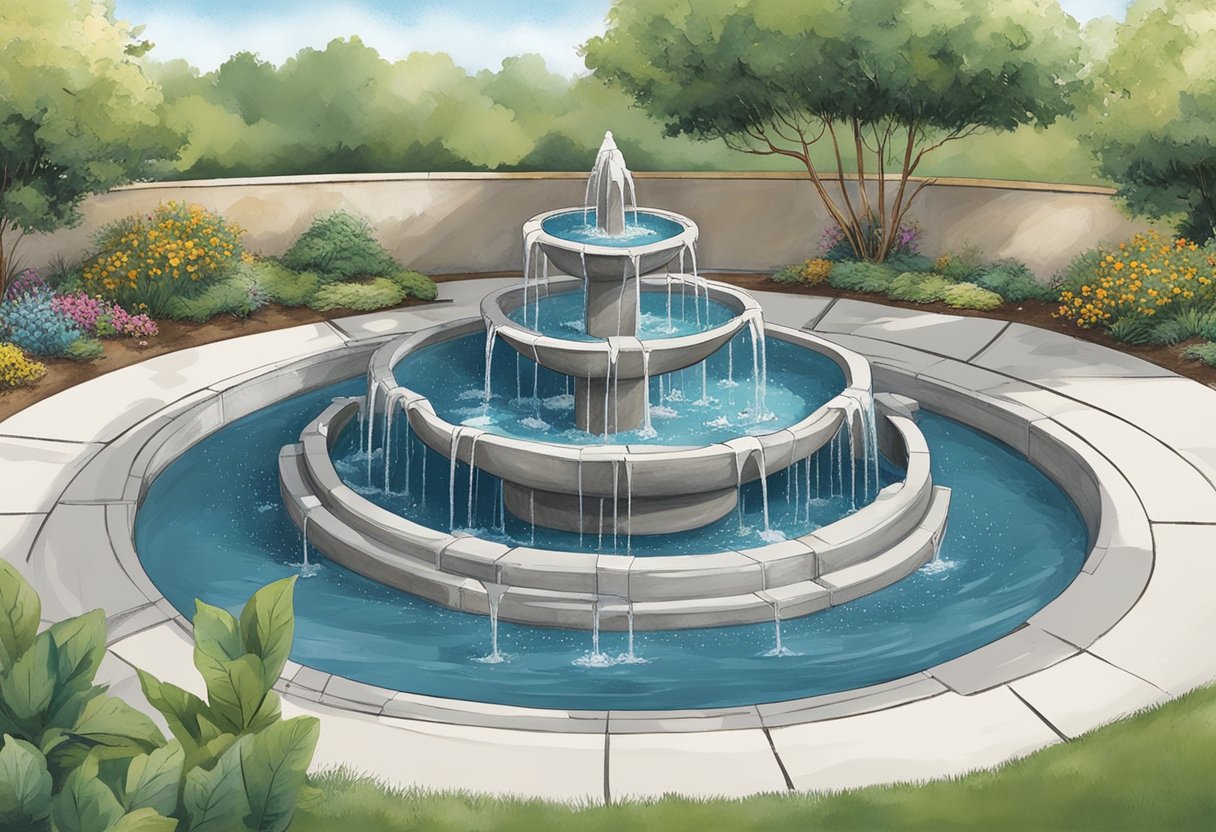
Ensuring a fountain’s longevity and aesthetic appeal, waterproofing is a critical step in the repair process, followed by applying the right finish.
Applying Sealant
To safeguard the fountain against water damage, a concrete sealer should be uniformly applied to the clean, dry surface. This sealer acts as a barrier, preventing water from permeating the concrete. Typically, sealants such as SANI-TRED’s PermaFlex offer durable waterproofing, which is essential for outdoor fountains exposed to various weather conditions. It’s important to follow the manufacturer’s instructions on application and drying times to achieve optimal protection.
Painting and Decoration
Once the fountain is sealed and waterproofed, painting can commence. Using a specialized pool paint ensures the paint withstands water exposure and complements the waterproofing process. The paint should be applied in thin, even coats to prevent bubbling or peeling. If the fountain features decorative elements, they should be painted with precision to enhance the fountain’s overall appearance. Choosing paint colors that are designed for outdoor use will help maintain the aesthetic under sunlight and weather variations.
Fountain Maintenance and Care
Essential to fountain upkeep, diligent maintenance and regular cleaning ensure the longevity of the structure, while pump and water level maintenance are crucial for consistent operation.
Regular Cleaning
The integrity of a concrete fountain is preserved through routine cleaning. One should commence by turning off the fountain and draining the water basin, removing any debris that could lead to blockages or pump damage. A mix of two parts household vinegar to eight parts water serves effectively to clean fountain pumps. Utilizing a non-abrasive brush or cloth, one must thoroughly scrub the basin and any other water-contact surfaces to deter algae and build-up. It is advisable to perform such cleaning at least once monthly for optimum results.
Pump and Water Level Maintenance
A fountain’s water pump is the heart of its functionality, necessitating regular inspections. To maintain efficiency, users should check the pump monthly for obstructions or signs of wear, cleaning out any accumulated debris. The water level should be consistently monitored and maintained, as low levels may cause the pump to work harder, leading to premature wear or failure. For DIY enthusiasts, simple pump maintenance can be self-taught to keep their fountain’s flow seamless and their structure’s integrity intact.
Troubleshooting Common Fountain Problems
When a concrete fountain exhibits problems, it’s often related to water flow or wear and tear. Prompt repairs can restore functionality and aesthetics.
Addressing Water Flow Issues
Water flow in a fountain is essential for its proper operation. A common issue to look out for is a malfunctioning pump, which is the heart of the fountain’s water circulation system. When the water flow is obstructed or diminished, one should inspect the pump for debris and ensure it’s operating at full capacity. If the pump is beyond repair, replacing it is usually straightforward and can quickly restore water movement. Occasionally, a blockage in the water feed hose might also impede flow, necessitating a thorough cleaning or replacement.
Handling Wear and Tear
Concrete fountains are durable but can develop cracks and chips over time due to weathering and stress. Such wear and tear are not only unsightly but can also lead to leaks and structural damage. For smaller cracks, a putty knife can be used to apply Sani-Tred, a versatile waterproof sealant that binds well to concrete and offers a permanent solution. For temporary fixes, people might use duct tape, but this is not a long-term solution. More extensive damage may require a concrete patching compound, which, when applied correctly, can significantly extend the fountain’s lifespan and maintain its beauty.

 CALL US NOW
CALL US NOW